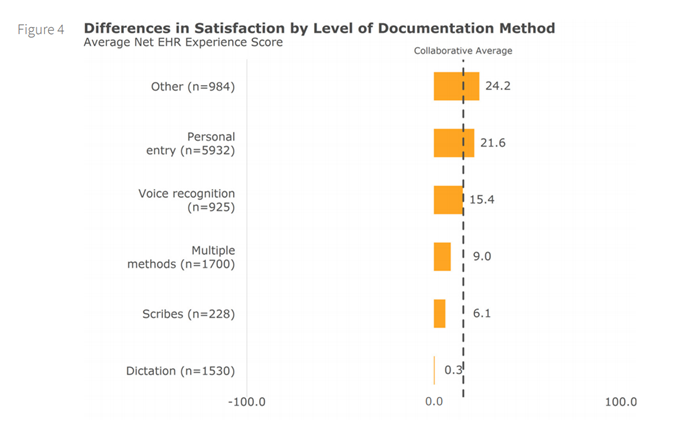
Do Scribes and Voice Recognition Improve EHR Satisfaction?
As the Arch Collaborative effort has grown, we’ve heard from countless provider leaders that documentation burden is a key factor in their clinicians’ dissatisfaction with the EHR.
Admittedly, data-entry inside the EHR has exploded since they were first implemented in healthcare. It’s no secret that many clinicians rightly feel the EHR is better for billing than for patient care.
As clinician burnout gains an increasing focus in industry conversation, health systems are pushing on EHR vendors to create more usability systems, while simultaneously contracting third party vendors to help alleviate the workflow woes created by electronic records.
One solution that many health systems have come to rely on is using scribes and voice recognition technology to reduce the documentation burden of their end users. Providers hope that by providing a degree of separation between clinician and data entry, satisfaction will improve.
So, the Arch Collaborative asked the question: “How does using either scribes or voice recognition impact the satisfaction of EHRs?”
We published the answer to that question in our most recent EHR Mastery report:


We found that there is no significant correlation between these two tools and the satisfaction of clinicians who use them. In fact, if anything, we saw a slightly negative correlation between scribes/voice recognition software and user satisfaction.
Which begs the question, “why is that?”
- Clinicians who struggle with documentation and feel they need these tools are already struggling with the EHR.
- More technology doesn’t help people struggling with technology. It only adds another layer of complexity.
Often, health systems that implement these tools do so based on the feedback they receive from clinicians about how disgruntled they are with the EHR. Scribes and voice recognition act merely as a band-aid, covering up a deeper flaw in the EHR instance itself.
This is not to say that voice recognition software won’t eventually become sophisticated enough to overcome these obstacles and become a seamless solution for data entry – but the data show that the current-state tools do not have that kind of impact.
When we break out documentation methods by satisfaction, we see that personal entry yields above average satisfaction scores from clinicians. Voice recognition only produces average results for clinicians who use it and clinicians who use scribes for data entry report satisfaction levels nine points below average.
For the time being, it would seem that “the good old-fashioned way” remains the best option for satisfied clinicians. Arch Collaborative data also supports the idea that clinicians with higher levels of personalization have greater satisfaction.
It makes sense that physicians who make personal data entry effective (through personalization) would be happier than those who seek to disengage from the system entirely.
This EHR mastery report contains several key takeaways, but one of the biggest is that scribes and voice recognition software aren’t having the massive impact that health systems have hoped for, yet.
That’s not so say that they won’t eventually be a key component in an EHR optimization strategy, but for now, you can’t rely on these tools to solve your documentation woes.
If you’d like to see the executive summary, with additional findings from our report, shoot us an email at Archcollaborative@klasresearch.com.